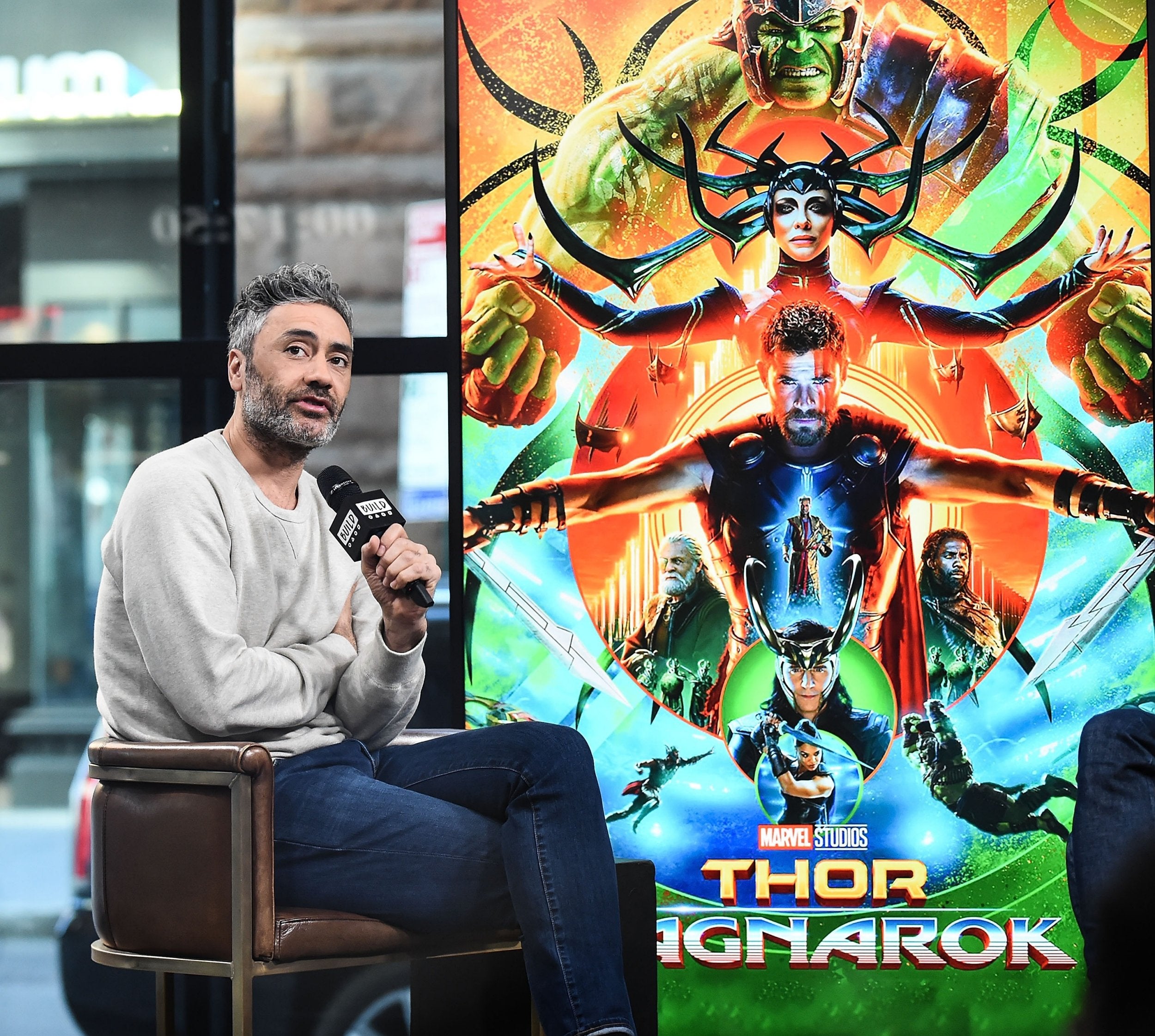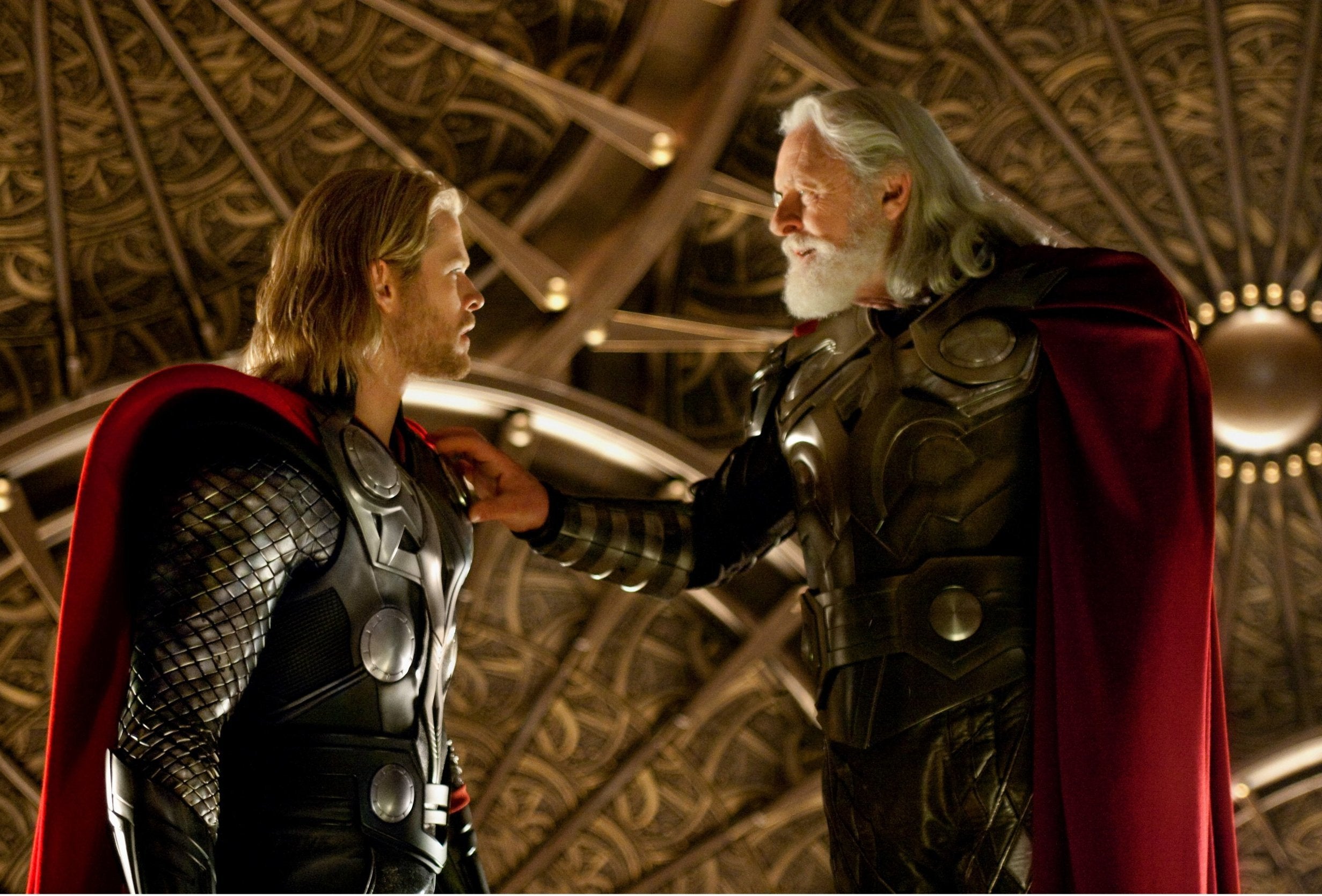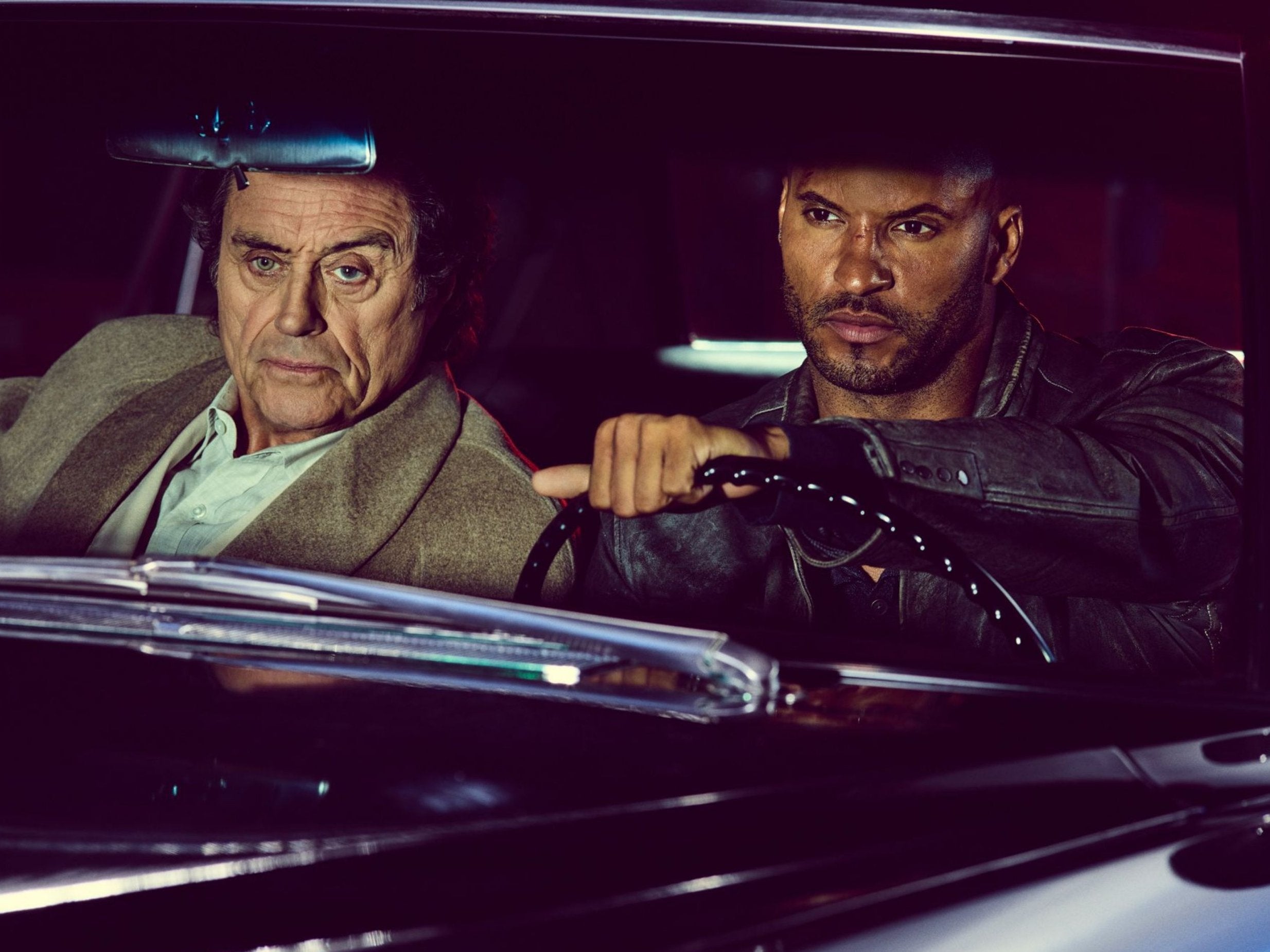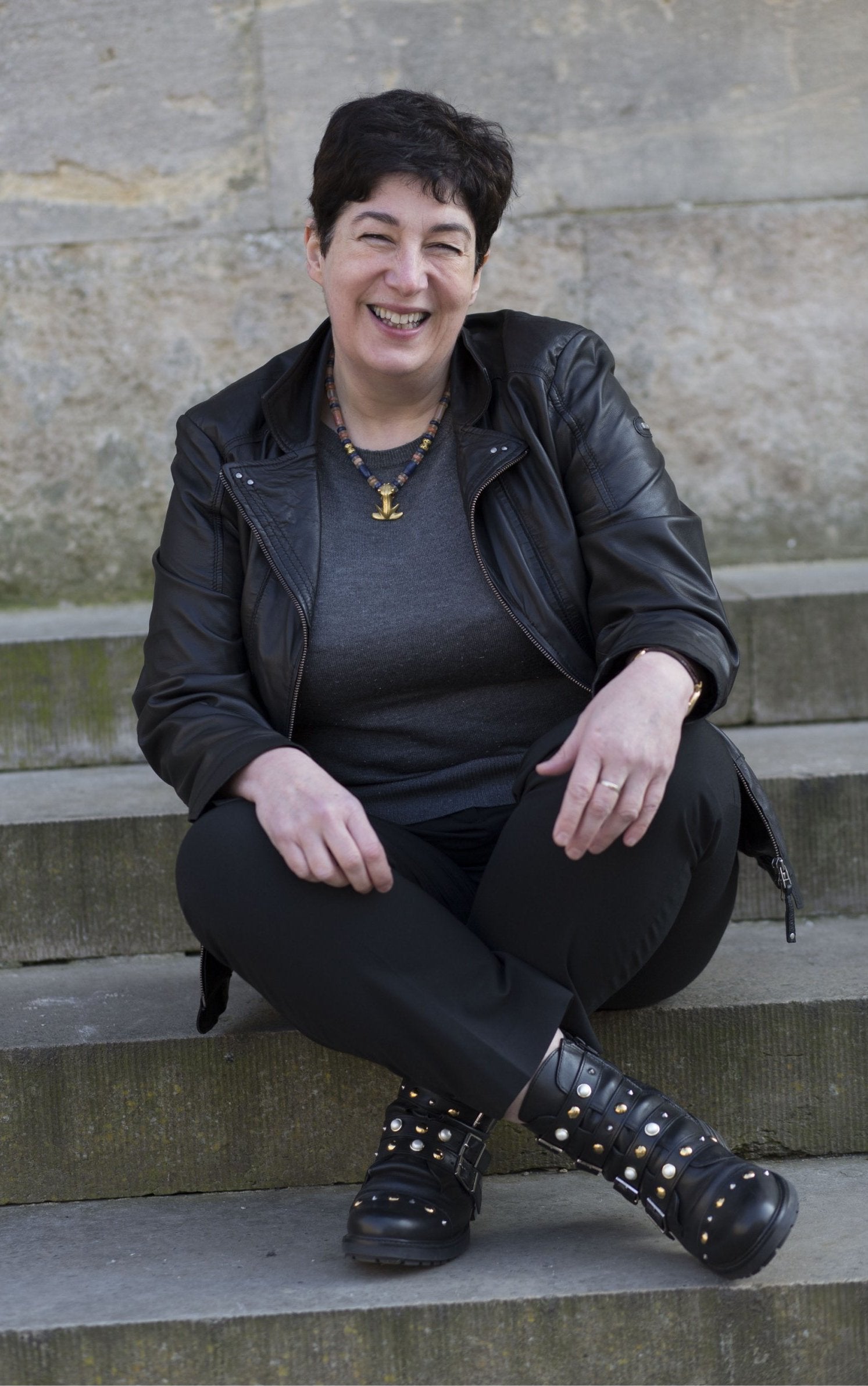The Independent's journalism is supported by our readers. When you purchase through links on our site, we may earn commission.
Norse mythology is enjoying an unlikely renaissance in popular culture
The myths are brutal tales of survival and war set against a cold, dark backdrop often stained with blood. So why are we so rapt by their retellings? David Barnett finds out

Your support helps us to tell the story
From reproductive rights to climate change to Big Tech, The Independent is on the ground when the story is developing. Whether it's investigating the financials of Elon Musk's pro-Trump PAC or producing our latest documentary, 'The A Word', which shines a light on the American women fighting for reproductive rights, we know how important it is to parse out the facts from the messaging.
At such a critical moment in US history, we need reporters on the ground. Your donation allows us to keep sending journalists to speak to both sides of the story.
The Independent is trusted by Americans across the entire political spectrum. And unlike many other quality news outlets, we choose not to lock Americans out of our reporting and analysis with paywalls. We believe quality journalism should be available to everyone, paid for by those who can afford it.
Your support makes all the difference.“What tidings are to be told of Ragnarok? Of this I have never heard before.”
Thus spake Gylfe, the king of the lands we now call Sweden, who – disguised as a traveller called Ganglere – sought out Asgard, the home of the gods. There, he asked questions about Odin and Thor, Loki and Balder, and all the deities of the Norse pantheon.
Gylfe’s quest for knowledge is recounted in the “Prose Edda” manuscripts – tales of the gods of Asgard told in the Northland peninsula, recounted by 13th-century Icelandic poet and historian Snorri Sturluson hundreds of years later.
Now, eight centuries after their publication, there is a resurgence of interest in the Norse myths.
Mythologies of pre-Christian societies have inspired novels, films and video games. But compared to, say, the Greek myths, set against the rippling, warm waters and sunsoaked landscapes of the Mediterranean, with their beauteous goddesses of love, the Norse myths are brutal and harsh tales of survival and war in a cold, dark backdrop often stained with blood.
If myths were soap operas, the Greek gods would be the rich one-percenters of Dynasty, living in splendid isolation above the affairs of men, wanting for nothing and playing out their power games against each other among the vineyards of Mount Olympus.

Norse mythology, on the other hand, would be EastEnders – often bleak, sometimes depressing and imbued with a fatalism that no matter what happens, it’s all going to end in tears and an ominous drumroll signifying even worse is to come.
The Norse universe posited a cosmic tree called Yggdrasil from which sprouted nine worlds. Humans scratched out a living on Midgard, with the gods above us in Asgard. There is Niflheim, a cold, dark, inhospitable place; Muselheim, the land of the fire giants; Jotunheim, the home of the giants; Vanaheim, where an older branch of the gods of Asgard resides.
Alfheim and Svartheim are, respectively, the worlds where the inspirational and beautiful light elves live, and where the master craftsmen, the dwarves, create wonders such as Thor’s hammer, Mjölnir .
Inside Asgard is Valhalla, the hall of heroes where the spirit of every warrior who falls in battle must go, and its dark twin is the world of Helheim, home to those who died a dishonourable death, and whose ruler, Hel, plots to bring about Ragnarok – the end of the gods – with her army of the dead.
Some of this might sound familiar, even if you’ve not read widely about the Norse myths. Much of it forms the foundations of the Marvel Cinematic Universe – including the three Thor films made since 2011 and the Avengers series in which the god of mischief, Loki, is a principal villain.

The Marvel films do, of course, mine the comics in which Thor first appeared in 1962, created by Stan Lee, his brother Larry Lieber, and legendary artist Jack Kirby. That was certainly the first introduction to the Norse pantheon for the English writer Neil Gaiman.
“The comics prettied up Thor and made him a hero,” he says. “[They] simplified Loki into a villain, and made the mythos absolutely perfect for a pre-pubescent superhero audience ... I moved on to books that retold the original myths, and I think the first one I read was Roger Lancelyn Green’s Myths of the Norsemen. There I discovered that the stories were weirder than I had ever imagined.”

Unlike the Marvel versions, the myths paint the principal players as much more nuanced and less black-and-white. Loki is not Thor’s brother, as in the comics, and is less evil and more mischievous, while Thor is a little more stupid than his Marvel version.
But that doesn’t mean the Marvel vision is wrong, it is just another example of how the Norse myths have proven incredibly adaptable over the past thousand years. The author Joanne Harris came to the myths through Dorothy G Hosford’s 1952 book Thunder of the Gods, which retold them for children. From there, Harris worked her way through the various retellings until she tackled Snorri Sturluson’s 13th-century Prose Edda, in various translations before teaching herself Old Norse so she could read the original.
“I can do it, very slowly, and with a dictionary, but I can do it,” says Harris. But what’s important is that the Norse myths have changed in the way they’ve been told over the generations.
“Snorri was writing the Edda through the lens of Christianity,” she says. “He cast Loki as a Lucifer character, he tried to impose some sense of order on a belief system that was very chaotic.
“In Victorian times, the myths were very much retold with a sense of the empire of the gods, which was something Britain was of course heavily involved in. Marvel took the gods and made them superheroes, which makes sense in terms of the stories America wants to tell.
“What we’re doing is retelling the stories in a way that they relate to us. And it’s the mark of good stories that they can be used again and again in this way.”

Harris has just had published The Testament of Loki, the second of her novels (following on from 2014’s The Gospel of Loki) which puts the god of mischief front and centre... and in the modern era. She’s also written two novels, Runemarks (2007) and Runelights (2011), which are set in a world after Ragnarok, when the nine worlds have been destroyed and reborn, and the gods are no longer ascendant. Her next book is a volume that may tie the two narrative strands together.
Neil Gaiman’s 2017 book Norse Mythology, in which the author picks out a narrative thread from the birth of the gods to their end, was a runaway bestseller, topping both the Sunday Times and the New York Times bestseller lists. And that’s something that surprised even Gaiman.
He’d already delved into the Norse myths for his 2001 novel American Gods, which last year became a hit TV series.
The Norse myths are central to American Gods. The roguish Mr Wednesday, played superbly by Ian McShane in the Starz/Amazon Prime series, is an incarnation of the Norse pantheon’s All-Father Odin. Gaiman’s story posits waves of immigration to America bringing with them their own gods – or versions of them – who in the modern day find it a struggle to find worshippers among the media and money-obsessed populace. American Gods features a very diverse cast of characters – Britain’s Ricky Whittle plays the lead as Shadow Moon.
Norse mythology is, of course, traditionally very white, given the Scandinavian countries it originated in. When Idris Elba was cast as Heimdall in Kenneth Branagh’s 2011 film Thor, white supremacists were upset. One far-right group in the US called for a boycott, claiming “Marvel Studios believes white people should have nothing that is unique to themselves”.
But they were perhaps ignoring the fact that the stories were based on myths and legends, where elves and giants inhabit nine worlds. (A god who guards a rainbow bridge and can see across multiple dimensions is fine, but not if he’s black?) As American Gods shows rather neatly, tales of gods and monsters can transcend the confines of the original cultures in which they were first told.

“About seven years after American Gods came out,” says Gaiman, “I was asked if I’d like to do a book about the myths themselves. I thought about it for a long time, trying to figure out what voice would be needed to tell these stories, and even whether these stories needed to be told again at all.”
Over the next three or four years Gaiman wrote down stories, experimenting with voice and style, in between his many other projects. Then, in 2015, his publishers gently pointed out that he’d signed a contract to write the Norse myths book and he decided he’d better get on with it.
“I’ve been writing books for a while and I’ve a fairly good idea how they’ll sell,” says Gaiman. “I know a novel will sell so many copies and a short story collection will sell perhaps half of that, maybe a book of essays going to sell a quarter. So I thought, OK, a book on Norse mythology is probably going to sell an eighth of what a novel might sell.
“I was absolutely astonished as it climbed up the bestseller lists and hung around there for quite a long time.” As he speaks, Gaiman clicks on the Amazon bestsellers list, and laughs delightedly. “It’s still number one in the science and religion category. This is just gloriously mad.”
Gaiman this year wrote a blurb for a new edition of Kevin Crossley-Holland’s The Penguin Book of Norse Myths: Gods of the Vikings, reissued in February almost 40 years after it was first published. Another series of American Gods is currently shooting, and the TV drama series Vikings is currently in its mid-season five break, due to return this year.
“I suppose the Norse myths do seem to be having a moment, don’t they?” says Joanne Harris. “But really, they have a series of moments all the time.”
But what’s making them so popular right now? What’s the appeal? Harris says: “They’ve always chimed with me since I first read the stories. I live in Yorkshire, and these stories are embedded in the landscape of northern England. The myths are dark but they’re very funny. Bad things happen but everyone’s laughing their socks off about it. It’s literally eat, drink and be merry.”
Because tomorrow we die, as the saying goes? Gaiman agrees. “There’s nothing shiny about the Norse myths. They’re stories about a cold, inhospitable place where the best thing you can imagine is to be killed in battle. Most of the stories are utterly tragic, and I find that fascinating. Because you know it’s not going to end happily.”
Ah. What tidings to be told of Ragnarok? Ragnarok is a foretold, immutable end to the Norse sagas. The worlds will be submerged, there will be a cataclysmic battle, and everybody – gods, giants, elves, humans – will die. It’s part of the fabric of the Norse myths. It has to happen – an endless cycle of destruction and rebirth.
Then the worlds are created anew. The gods return. Humanity starts afresh. Everybody gets a second chance.
It would be easy to believe, perhaps, that in the endless cycle of destruction and rebirth that is Norse mythology, that looking around the world right now, we’re in a pretty heightened state of Ragnarok red alert. Has Ragnarok happened yet? Or are we still waiting for it?
“Ragnarok is a metaphor for Christianity,” says Harris. “It effectively gets rid of the old gods. If you look at most mythological systems and religions, they all have an end-of-the-world scenario. I think Ragnarok has happened several times.”
Join our commenting forum
Join thought-provoking conversations, follow other Independent readers and see their replies
Comments